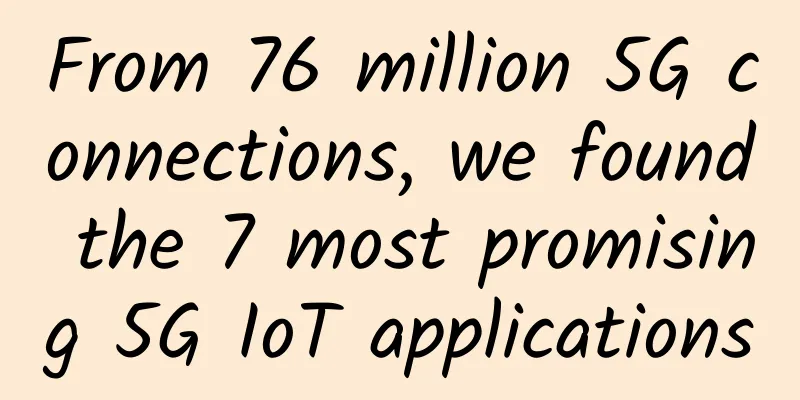5G base stations were burned down, and some community base stations were forced to be demolished...

|
Nowadays, mobile communication technology has penetrated into every aspect of social life. Various mobile phone applications have completely changed our lives. As of 2019, China has built 5.44 million 4G base stations. It is expected that by the end of 2020, the number of 5G base stations in China will likely reach 700,000.
In a busy city, people may see a base station every 500 meters. In some future 5G scenarios, there may even be a base station every 50 meters. The increasingly dense base stations have greatly improved the quality of network coverage and brought convenience to people. However, there are also many people who strongly resist or even obstruct the base station construction projects around them. Why? The reason is simple: fear of “radiation”. Disputes surrounding base station radiation have occurred from time to time in various places, and related news is not uncommon. In many cases, operators have no choice but to dismantle all base station equipment in the community and withdraw from the site, which affects the normal lives of more users. The situation in some parts of foreign countries is even worse, and there have even been incredible actions such as burning 5G base stations.
So, how strong is the signal radiation from base stations? Will it have any impact on the human body? How far should we be from base stations? As a radio practitioner and enthusiast, I would like to talk to you about the above issues today. Biological effects of electromagnetic radiation Studies have shown that electromagnetic waves interact with organisms. Depending on the mechanism of action, the biological effects of electromagnetic radiation can be divided into thermal effects and non-thermal effects. 1. Thermal effect When a living organism is exposed to electromagnetic radiation of a certain intensity and absorbs it, the temperature of the body's tissues rises. This effect is called the thermal effect of electromagnetic waves. Thermal effects are divided into Ohm thermal effect and wave energy thermal effect. The heating principle of the Ohmic heating effect is that the free electrons and ions inside the human body move in a directional manner along the direction of the electromagnetic wave field strength, and the current passes through the biological tissue (equivalent to passing through the resistor), producing the Ohmic heating effect. In the normal living area, the electromagnetic wave energy that the human body can be exposed to is very weak, and the Ohmic heating effect of electromagnetic radiation is generally not large. The heating principle of the wave energy heating effect is that the friction between molecules generates heat. The principle of wave energy heating is complicated and will not be described here. In real life, "microwave ovens" use this principle to heat food. Let's briefly analyze the process of microwave oven heating food: food contains a lot of water, and the natural frequency of water molecules is 2.45GHz. Microwave ovens use microwave signals of this frequency to irradiate food in a closed cavity. Water molecules are affected by the external field strength and complete 2.45 billion high-frequency oscillations per second. The molecules rub and collide back and forth, generating a lot of heat, thereby achieving the purpose of quickly heating food.
2. Non-thermal effects When organisms absorb the energy of electromagnetic fields, they produce biological changes that cannot be attributed to temperature changes, which are called non-thermal effects of electromagnetic fields. The essence of non-thermal effects comes from the inside of the organism, and the external electromagnetic field only serves as a trigger signal. Electromagnetic radiation safety mainly focuses on the interference of electromagnetic waves on the human nervous system and the penetration effect of electromagnetic waves. The impact of electromagnetic waves on the human nervous system: When the human body is exposed to an electromagnetic wave environment with a frequency of 4Hz-1KHz and the induced current density exceeds 100mA/m2, the excitability of the central nervous system will change dramatically. For safety reasons, in an electromagnetic wave environment of 4Hz-1KHz, the occupational exposure limit induced current is less than 10mA/m2, and the public exposure limit induced current is less than 2mA/m2. There is no need to panic about electromagnetic radiation of 4Hz-1KHz. Because a 1kHz electromagnetic wave signal requires an antenna at least 75,000 meters long to radiate the signal. Such a long antenna is difficult to obtain, and the electromagnetic waves in this frequency range in the environment are very weak. Biological effects of high-frequency radiation penetrating human cells: The higher the frequency of electromagnetic waves, the stronger their transmittance. When the frequency is higher than ultraviolet rays (such as X-rays, gamma rays, etc.), they can penetrate human cells. The rays interact with body cells, tissues, body fluids and other substances, causing the atoms or molecules of the substances to ionize, thus directly destroying certain macromolecular structures in the body, such as breaking protein molecular chains, breaking ribonucleic acid (RNA) or deoxyribonucleic acid (DNA), destroying some enzymes that are important for material metabolism, and even directly damaging cell structures. This type of radiation is also commonly known as ionizing radiation, which is significantly harmful to the human body. Therefore, ordinary people need to stay away from it; while practitioners, such as X-ray doctors, need to use professional protective equipment.
Electromagnetic radiation exposure limits and standards Different countries have different understandings of the health hazards caused by electromagnetic radiation. Therefore, the electromagnetic radiation standards formulated by different countries are quite different. When formulating the standards, my country took into account the impact of electromagnetic radiation on human nerves, which are more stringent than the standards set by the United States, Australia, Germany and other countries. When formulating electromagnetic radiation standards, different standards are used for different exposed groups, which are divided into occupational exposure limits and public exposure limits. Professionals in radiation environments refer to adults who are exposed to known conditions, understand the relevant risks and take appropriate protective measures. The public refers to individuals in society of all ages and different health conditions. Considering that ordinary people will not take anti-radiation measures, the public exposure limits are more stringent than the occupational exposure limits. Since 1988, my country has successively promulgated the "GB 9175-88 Environmental Electromagnetic Wave Hygiene Standard" and the "GB 10437-1989 Workplace Ultra-High Frequency Radiation Hygiene Standard", which clearly stipulates the occupational exposure safety limits and public exposure safety limits, see Table 1. Table 1. Safety limits of electromagnetic radiation Table 2 shows the comparison of the derived limits of electromagnetic radiation exposure to the public in different countries and regions. It can be seen that my country has very strict requirements for electromagnetic environment radiation safety, and its limits are significantly lower than those in the EU and the United States. Table 2. Comparison of derived limits of electromagnetic radiation exposure to the public in different regions Humans and base station radiation Multiple experimental reports have proven that the mobile communication frequencies and powers currently used will not cause harm to the human body. In June 2006, WHO released a report on Mobile Communications and Their Base Stations, which clearly stated: "No recent study has shown that exposure to radio frequency fields from mobile phones or base stations can cause damage to health." When a 4G mobile base station is working normally, the signal power radiated by its antenna port does not exceed 5W; the power transmitted by a 4G mobile phone does not exceed 0.1W; the power of an ordinary household living room lamp is 40-60W. From the perspective of "thermal effect", the impact of a mobile base station on the human body is far less than that of a warm lamp at home.
We often hear the concept of "darkness under the lamp". The so-called "darkness under the lamp" means that the signal received by the user directly below the base station antenna is the smallest or even non-existent. This phenomenon is determined by the working principle of the base station antenna. The antenna relies on the vibrator to radiate the signal. The antenna pattern of the symmetrical vibrator antenna is shown in the figure below: It can be seen that there is no signal radiation directly below and above the symmetrical oscillator. If the base station antenna is hung on the roof, residents directly below do not need to worry about the "danger" of radiation. From the perspective of the strength of the base station signal, they are the "safest". Generally speaking, how far away from a base station tower is it safe for the public to be? According to the "GB8702-88 Electromagnetic Radiation Protection Regulations", the calculation formula for the distance that the public exposure limit complies with is derived, see Table 3. Table 3. Safe distance from the radiation source antenna r: minimum safe distance from the antenna, unit: mf: frequency, unit: MHzP: antenna radiation power, unit: WG: gain value in the direction of maximum radiation of the antenna For example, for a 4G base station with an output power of 5W and an antenna gain of 13dbi (20 times), the formula in Table 3 is used to calculate that a distance of more than 1.4 meters from the antenna in the direction of its maximum antenna gain is a safe distance. Generally, the antenna of a base station tower is hung at a height of about 30 meters, which is much greater than the safety distance of 1.4 meters. That is, the radiation power received by citizens is far lower than the public exposure limit stipulated by the state. In China, the radiation dose of base station signals received by the public is very small and safe. Treat radiation correctly How should ordinary citizens correctly treat electromagnetic radiation? 1). Do not be afraid of "radiation". Most electromagnetic radiation is harmless to the human body. Excessive worry about radiation will affect your physical and mental health. 2) Avoid harmful frequency sources rationally. "Frequency" and "power" are key factors in determining whether radiation is harmful to the human body. For example, the public should avoid contact with high-frequency and high-energy X-rays and gamma rays unless necessary. 3). Wear regular radiation protection equipment. For some special groups, in an environment with a high radiation field strength, they should wear radiation protection equipment to resist radiation. Note that radiation protection equipment is not omnipotent. Its isolation performance is related to the signal frequency. The higher the signal frequency, the worse the isolation of the radiation protection equipment. For high-frequency radiation, most radiation protection clothing on the market is not very effective. 4) Use mobile phones correctly. People generally stay away from base stations, but they can't put down their mobile phones, which are also radiation sources. Considering the distance and duration, the radiation dose from mobile phones to the human body may be higher than that from base stations. Studies have shown that the signal frequency and power of mobile phones will not harm the human body, but cases of vision loss and cervical spine diseases caused by using mobile phones for too long are becoming more and more common. 5). Eat a healthy diet and strengthen physical exercise. The biological effect mechanism of electromagnetic radiation is related to oxidative damage. Therefore, antioxidant foods are the first choice. For example, cruciferous vegetables, cabbage, radish, etc. have anti-radiation function. |
Recommend
3 common network speed test tools under Linux
No matter what operating system you use, network ...
Spain's 5G state subsidies may exclude Huawei, Huawei appeals
On October 10th, local time on Monday, Huawei app...
Comparing the 5G pace of the three major operators: China Telecom advocates steady progress in four points
As the core of the next generation technology, 5G...
RAKsmart: US CN2 line VPS monthly payment starts from $0.99, Japan/Hong Kong VPS monthly payment starts from $2.99
The day before yesterday, we shared the news of R...
The United States suddenly changed its mind and allowed Huawei to cooperate in formulating 5G standards, only to shoot itself in the foot because of the Entity List
This article is reprinted with permission from AI...
How hard do communication networks work to save power?
The energy consumption of communication networks ...
How 5G Promotes Smart City Development
Global examples of how smart cities are leveragin...
Did you know? The 5G market started with B2B
The two major obstacles to the popularization of ...
Huawei releases a full range of 5G-A solutions to make 5G-A a reality
[ Dubai , UAE , October 11, 2023 ] During the Glo...
5G+AR ushering in a new "blue ocean"
[[408334]] In recent years, the development of te...
How to choose between open source self-built/hosted and commercial self-developed trace?
[[419923]] With the rise of microservice architec...
An article to introduce you to network protocols
Author | Cai Zhuliang 1. Directory Network Protoc...
British media: Britain is likely to fail to achieve broadband and 5G targets by 2025
According to a report on the BBC website on Decem...
New "skills" and "higher salaries" - Ruijie launches new service certification products
Recently, Ruijie Networks released two new servic...
[11.11]edgeNAT: 20% off for monthly VPS and 30% off for annual VPS, Korean/American VPS monthly payment starts from 48 yuan
edgeNAT has launched a Double 11 promotion. From ...









